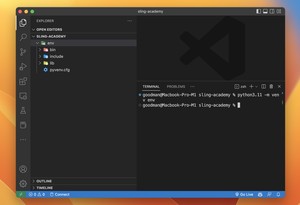This concise, example-based article will walk you through several approaches to removing one or many substrings from a given string in Python. No time to waste; let’s get our hands dirty with code.
Using the replace() method
This approach is quick and straightforward. Here’s what you need to do to get the job done:
- Call the
replace()method on the string and pass the target substring and an empty string as arguments. - Repeat the process for each substring you want to remove.
- Assign the modified string back to the original variable or a new variable.
Example (remove a substring):
text = "'Hello World!' is a boring sample string."
# Remove "boring" from text
text = text.replace("boring ", "")
print(text)Output:
'Hello World!' is a sample string.Another example (remove a list of substrings):
# define a reusable function
def remove_substrings_replace(text, substrings):
for substring in substrings:
text = text.replace(substring, '')
return text
# a list of substrings to remove
substrings = ["blue", "red", "green"]
text = "blue Welcome red to green Sling sample blue red Academy!"
result = remove_substrings_replace(text, substrings)
print(result)Output:
Welcome to Sling sample Academy!Using regular expressions
You can use regular expressions to find and remove the target substrings using the re.sub() function. This approach is a little tough for beginners, but it provides more flexibility, such as can eliminate substrings regardless of case sensitivity.
Example (basic):
import re
def remove_substrings_regex(text, substrings):
pattern = '|'.join(map(re.escape, substrings))
return re.sub(pattern, '', text)
text = """one two three four
one two three four
five six two three four
eleven two three five
"""
substrings = ["two", "three"]
result = remove_substrings_regex(text, substrings)
print(result)Output:
one four
one four
five six four
eleven fiveTo remove substrings ignoring case sensitivity, you need to use the re.IGNORECASE flag when creating a pattern object or calling a function from the re module.
Example:
import re
string = "slingacademy.comFOOFOObarBARbar"
# substrings to remove
substring1 = "foo"
substring2 = "bar"
pattern = re.compile(f"({substring1}|{substring2})", re.IGNORECASE)
# Remove all occurences of substrings regardless of case
new_string = pattern.sub("", string)
print(new_string)Output:
slingacademy.comUsing the partition() method
You can use the partition() method to split the string into three parts: the part before the substring, the substring itself, and the part after the substring. Then you can use the join() method to join the parts without the substring.
Example:
string = "You are the Wolf of Wall Street, aren't you?"
substring = " of Wall Street"
before, match, after = string.partition(substring)
new_string = before + after
print(new_string)Output:
You are the Wolf, aren't you?Using the removeprefix() and removesuffix() methods
The removeprefix() and removesuffix() methods have been available since Python 3.9, and you can make use of one of them to remove a prefix or suffix from a given string, respectively.
text = "Hello World! Welcome to Sling Academy. Goodbye World!"
# remove "Hello World! "
text = text.removeprefix("Hello World! ")
# remove "Goodbye World!"
text = text.removesuffix(" Goodbye World!")
print(text)Output:
Welcome to Sling Academy.










